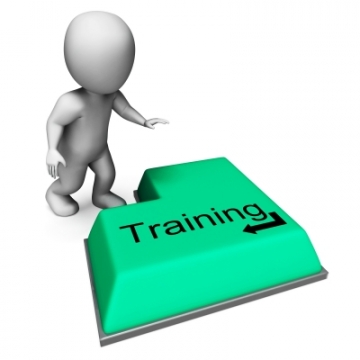
5 Training Tips to Make Ramp Time as Short as Possible
Ramp time refers to the time between when a new employee is hired and when he/she starts to become productive at their new job. For reasons of both cost and employee and team productivity, it’s quite understandable that companies are looking to accelerate this period, and to get new hires up to competence levels quickly. Gartner – the well-known research firm said a few months ago that “The benefits an organization plans to realize from a new [software] will not materialize until users have embraced and are productive with the new applications and processes. [Training] leaders should accelerate [user] adoption and productivity.
This article will present 5 tips to accelerate that time period, making it as short as possible.
1. Define Productivity
Ramp time is the time between when an employee is hired and when they become productive at their job. Some metrics to use when measuring productivity include:
– Social reach
– Time to revenue (retiring quota)
– Pipeline generation and management
– Lead to opportunity conversion
For the most success, productivity must be defined at the beginning of the process. Being consistent is key. Make sure that the goal is attainable and measurable for the time and activity.
2. Identify Training Needs
Any large company, Microsoft being a good example, training hundreds of new hires on a weekly basis. Taking from the first point above, once productivity has been defined, it is important to identify the tools that each new employee will need. To ensure adoption and retention, training must be delivered in a rigorous and motivating manner. This form of training program sets the tone for what is expected from the new hire.
New hire training should cover the following
– Company background and culture
– Industry
– Strategy
– Customers
– Product knowledge
To get the most out of it, the training program should be designed with the new employee in mind. However, overall, the most effective sales training has been shown to combine classroom experiences with real world customer contact.
3. Learn As You Work
Even in effective and strategic training programs, over 80% of what is learned during training is forgotten. Using real-time guidance technologies like WalkMe – which refocuses employee learning as a continuing process as opposed to a “first inning” event – will ensure that employees remember what they have learned. By doing so, in the moment of need, employees receive direct and immediate guidance – helping them perform more accurately and effectively.
Some of the benefits of using technologies like WalkMe include:
– Shortening training times
– Cutting the learning curve
– Increasing employee & team productivity
– Lowering training costs
– Ensuring continuous learning & knowledge retention
4. Assign a Mentor
Pairing up new hires with experienced employees for a structured mentoring program will also shorten the ramp-up period. A mentor is someone who is experienced that the new employee can lean on and learn from by observing. A mentor will also act as a direct person to any questions or concerns the new hire may have. Along with the new hire, the mentor was in the same position not too long ago and will help give a better understanding of things.
5. Continuous Performance Management
Ideally, sales people are competitive by nature and they want to be the best at what they do. This is defined by achieving specific sales results, but this can also become a problem during the ramp-up period.
During the ramp-up period, sales leaders, managers, and mentors need to think beyond the sales results and focus on tracking and rewarding key behaviors and sales activities for their new hires. These expectations can be communicated effectively by developing performance plans, which detail behaviors, specific activity levels and results that should be achieved by new employees during certain time periods.
Continuously managing performance benefit sales managers because they will be able to intervene earlier if a sales person is not achieving their goal. As well, managers will be able to recognize early success to reinforce positive behaviors.
No company can afford their new employees to loiter for up to a year. Their performance success or failure remains on your shoulders. Following these 5 steps will help you design a new program that will benefit the success of the new hires and your company as a whole.
